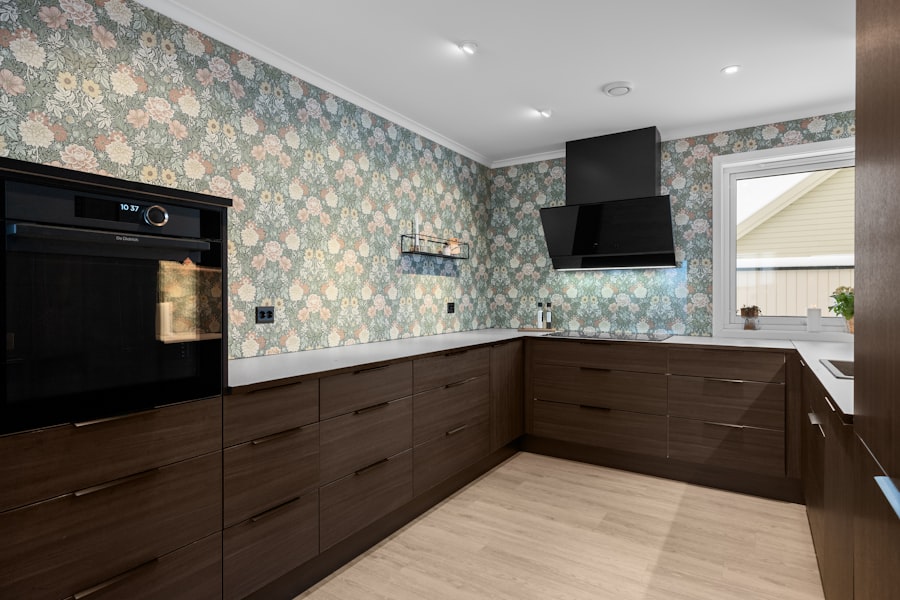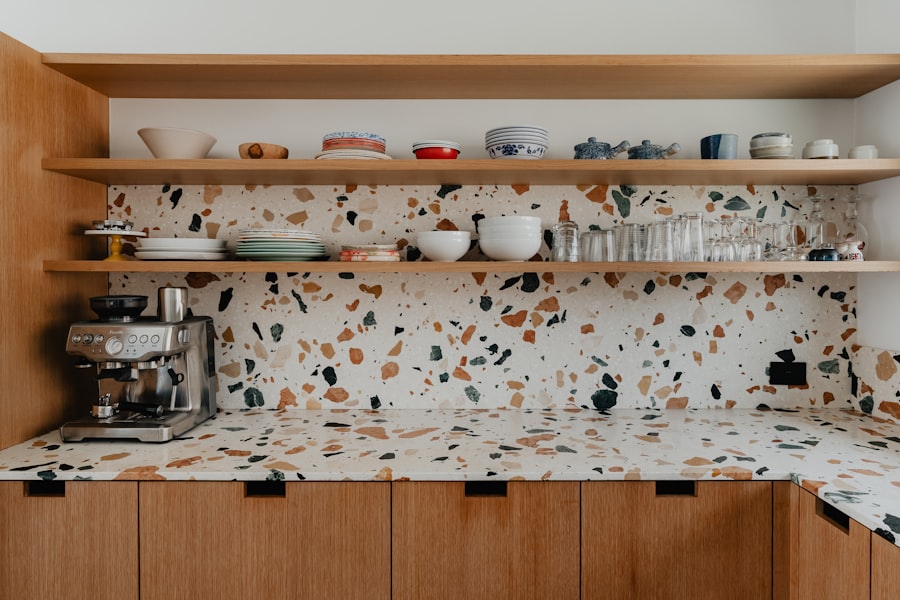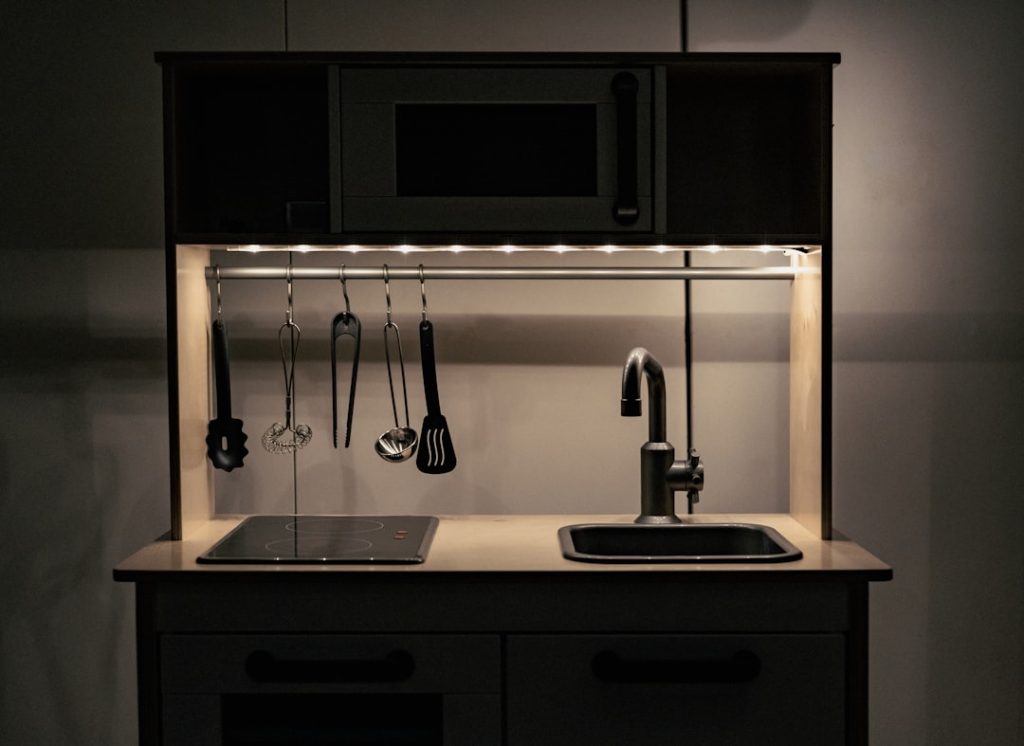The selection of materials for kitchen cabinets is a pivotal decision that can significantly influence both the aesthetic appeal and functional longevity of the cabinetry. Common materials include solid wood, plywood, particleboard, and medium-density fiberboard (MDF). Solid wood is often favored for its natural beauty and durability, offering a timeless look that can enhance the overall ambiance of a kitchen.
Species such as oak, maple, cherry, and walnut each bring unique grain patterns and colors, allowing homeowners to tailor their cabinets to their personal style. However, solid wood can be susceptible to warping and expansion due to humidity changes, which is an important consideration in kitchen environments. Plywood is another popular choice, known for its strength and resistance to warping.
Composed of multiple layers of wood veneer glued together, plywood offers a stable alternative to solid wood while still providing a high-quality appearance. It is often used in cabinet boxes and shelves due to its structural integrity. On the other hand, particleboard and MDF are engineered wood products that are more cost-effective but may not offer the same level of durability or aesthetic appeal as solid wood or plywood.
These materials are often used in lower-end cabinets or as a substrate for laminate finishes. When choosing the right material, it is essential to weigh factors such as budget, desired aesthetics, and the specific conditions of the kitchen environment.
Key Takeaways
- Select cabinet materials based on durability, style, and budget to ensure long-lasting performance.
- Understand different construction methods to choose cabinets that offer strength and stability.
- Opt for high-quality hardware to enhance functionality and extend the lifespan of cabinets.
- Proper installation is crucial for cabinet alignment, durability, and overall kitchen aesthetics.
- Regular maintenance and care help preserve cabinet appearance and functionality over time.
Understanding Cabinet Construction
The construction of kitchen cabinets plays a crucial role in their durability and functionality. There are several construction methods that can be employed, each with its own advantages and disadvantages. The most common types include framed and frameless cabinets.
Framed cabinets feature a front frame that provides structural support and allows for the installation of doors and drawers. This traditional construction method is often associated with American cabinetry and offers a variety of design options, including inset doors that sit flush with the frame. In contrast, frameless cabinets, also known as European-style cabinets, lack a front frame, resulting in a more modern look with greater accessibility to the interior space.
This construction method allows for wider openings and more flexible storage solutions. The choice between framed and frameless construction often depends on personal preference and the overall design aesthetic of the kitchen. Additionally, cabinet boxes can be constructed using different techniques such as dowel joinery, biscuit joinery, or pocket screws, each affecting the strength and stability of the cabinet.
Selecting Durable Hardware

The hardware used in kitchen cabinets is not merely functional; it also contributes to the overall design and usability of the cabinetry. Selecting durable hardware is essential for ensuring that cabinets withstand daily use over time. Common hardware components include hinges, drawer slides, knobs, and pulls.
When choosing hinges, it is important to consider options such as concealed hinges, which provide a clean look by hiding the hardware when the cabinet doors are closed. Heavy-duty hinges made from stainless steel or brass are ideal for larger doors or frequently used cabinets. Drawer slides are another critical component that can greatly affect the performance of kitchen cabinets.
Full-extension slides allow drawers to open completely, providing easy access to items stored at the back. Soft-close mechanisms are increasingly popular as they prevent slamming and reduce wear on both the hardware and cabinet structure. When selecting knobs and pulls, homeowners should consider not only the material and finish but also the ergonomics; hardware should be comfortable to grip and operate.
Investing in high-quality hardware can enhance both the functionality and aesthetic appeal of kitchen cabinets.
Ensuring Proper Installation
| Metric | Description | Target Value | Measurement Frequency | Responsible Party |
|---|---|---|---|---|
| Installation Accuracy Rate | Percentage of installations completed without errors or defects | ≥ 98% | Per Installation Batch | Quality Assurance Team |
| Installation Time | Average time taken to complete an installation | ≤ 2 hours | Weekly | Project Manager |
| Compliance with Installation Guidelines | Percentage of installations following documented procedures | 100% | Monthly Audit | Compliance Officer |
| Post-Installation Defect Rate | Number of defects reported within 30 days after installation | ≤ 1% | Monthly | Customer Support |
| Installer Training Completion | Percentage of installers who have completed required training | 100% | Quarterly | HR Department |
| Customer Satisfaction Score | Average customer rating of installation process | ≥ 4.5 / 5 | After Each Installation | Customer Service |
Proper installation of kitchen cabinets is vital for achieving a professional finish and ensuring long-term durability. Even the highest quality materials and construction methods can lead to problems if not installed correctly. It is essential to start with accurate measurements to ensure that cabinets fit seamlessly into the designated space.
This includes accounting for any irregularities in wall alignment or floor level that may require adjustments during installation. Leveling cabinets is another critical step in the installation process. Cabinets must be installed level to ensure that doors close properly and drawers function smoothly.
This often involves shimming cabinets to compensate for uneven floors or walls. Additionally, securing cabinets to wall studs is crucial for stability; this prevents them from tipping or sagging over time. For those who may not have experience with cabinet installation, hiring a professional can be a wise investment to avoid costly mistakes and ensure a flawless finish.
Considering Customization Options
Customization options for kitchen cabinets allow homeowners to create a unique look that reflects their personal style while maximizing functionality. Custom cabinetry can include tailored dimensions, specialized storage solutions, and personalized finishes that off-the-shelf options may not provide. For instance, homeowners may choose to incorporate pull-out shelves, lazy Susans, or built-in dividers to enhance organization within their cabinets.
In addition to functional features, customization extends to aesthetic elements such as door styles, finishes, and colors. Homeowners can select from various door styles including shaker, raised panel, or flat panel designs to achieve their desired look. Furthermore, custom finishes can range from painted surfaces to stained wood or even high-gloss laminates, allowing for endless possibilities in design.
Engaging with a skilled cabinet maker or designer can help homeowners navigate these options effectively while ensuring that their vision is realized.
Evaluating Finishing Techniques

The finishing techniques applied to kitchen cabinets play a significant role in both their appearance and durability. A well-executed finish not only enhances the natural beauty of the material but also provides protection against moisture, stains, and wear over time. Common finishing techniques include staining, painting, glazing, and applying clear coats or sealants.
Staining allows the natural grain of the wood to show through while adding color depth; it is particularly popular for solid wood cabinets. Painting offers a more uniform color option and can be used to create bold statements or soft pastels depending on the homeowner’s preference. Glazing adds an additional layer of complexity by creating depth through a translucent layer over painted or stained surfaces.
Clear coats or sealants provide essential protection against scratches and moisture damage; polyurethane finishes are commonly used for their durability and ease of maintenance.
Checking for Certification and Warranty
When investing in kitchen cabinets, it is crucial to check for certifications that indicate quality standards have been met. Certifications from organizations such as the Kitchen Cabinet Manufacturers Association (KCMA) ensure that products have undergone rigorous testing for durability, safety, and performance. Cabinets bearing these certifications are more likely to withstand daily use while maintaining their appearance over time.
In addition to certifications, understanding warranty options is essential for protecting your investment. A comprehensive warranty can provide peace of mind by covering defects in materials or workmanship for a specified period. Warranties may vary significantly between manufacturers; some may offer lifetime coverage while others provide limited terms.
It is advisable to read the fine print carefully to understand what is covered and any conditions that may apply.
Maintaining and Caring for Kitchen Cabinets
Proper maintenance is key to prolonging the life of kitchen cabinets and keeping them looking their best. Regular cleaning should be part of any maintenance routine; using a soft cloth with mild soap and water can effectively remove dirt and grease without damaging finishes. It is important to avoid harsh chemicals or abrasive cleaners that could scratch surfaces or strip protective coatings.
In addition to regular cleaning, periodic inspections can help identify any issues before they become significant problems. Homeowners should check for signs of wear such as loose hardware or misaligned doors and address these issues promptly to prevent further damage. For wooden cabinets, applying a fresh coat of wax or polish every few months can help maintain luster while providing an additional layer of protection against moisture and stains.
By implementing these maintenance practices, homeowners can ensure their kitchen cabinets remain functional and beautiful for years to come.



